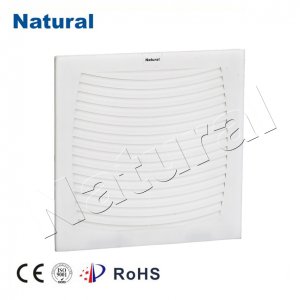In our modern lives, ensuring the quality of the air we breathe indoors has become an increasingly vital concern. With pollutants and allergens lurking in the air, the need for effective ventilation solutions has never been greater. Ventilation fans and filters have emerged as crucial tools in maintaining a healthy indoor environment. This article delves into the significance of ventilation fans and filters in enhancing indoor air quality.

The Importance of Indoor Air Quality Indoor air quality (IAQ) directly impacts our well-being. Poor IAQ can lead to a range of health issues, including allergies, asthma, respiratory infections, and even more severe conditions. Given that many people spend a significant portion of their time indoors, be it at home, in offices, or other enclosed spaces, ensuring clean and fresh air is paramount. The Role of Ventilation Fans Ventilation fans play a pivotal role in maintaining good IAQ by facilitating the exchange of indoor and outdoor air. They work by expelling stale, contaminated air from indoors and bringing in fresh, clean air from outside. This continuous flow of air helps dilute indoor pollutants, moisture, and odors. Ventilation fans are particularly important in spaces that are naturally less ventilated, such as bathrooms, kitchens, and basements. Modern ventilation fans are designed to be energy-efficient, running quietly while effectively improving the indoor air. They come in various types, including exhaust fans, supply fans, and balanced ventilation systems. Some advanced models are equipped with humidity and occupancy sensors, which automatically adjust fan speed according to the specific needs of the environment. The Power of Filters Ventilation systems are even more effective when combined with air filters. Air filters are designed to capture particles and pollutants suspended in the air, such as dust, pet dander, pollen, and even some bacteria. These filters prevent these contaminants from circulating indoors, ensuring that the air we breathe is cleaner and safer. High-efficiency particulate air (HEPA) filters are particularly noteworthy. They are capable of trapping particles as small as 0.3 microns in diameter, making them incredibly effective at removing even the tiniest airborne particles. HEPA filters are commonly used in vacuum cleaners, air purifiers, and HVAC systems to enhance IAQ significantly. Synergy of Ventilation Fans and Filters The combination of ventilation fans and filters creates a powerful synergy. As the ventilation fan brings in fresh air from outside, the filters ensure that this incoming air is free from pollutants. Simultaneously, the stale indoor air is pushed outside, carrying away contaminants. This dynamic interplay results in an environment with reduced allergens, improved humidity control, and minimized indoor pollutants. Maintenance and Best Practices To fully benefit from ventilation fans and filters, proper maintenance is essential. Filters should be replaced according to the manufacturer’s recommendations to ensure optimal efficiency. Regular cleaning of the fan blades and housing is also crucial to prevent the accumulation of dirt and grime that can hinder performance. Additionally, it’s recommended to open windows and doors when weather permits to allow natural ventilation. This can work in tandem with mechanical ventilation systems to create a continuous exchange of air. Conclusion In our pursuit of healthier indoor environments, ventilation fans and filters have emerged as indispensable tools. By facilitating the circulation of fresh air and removing harmful particles, these technologies significantly enhance indoor air quality. As we become more conscious of the impact of IAQ on our health and well-being, integrating effective ventilation systems becomes a crucial step towards creating a safer and more comfortable living and working environment.